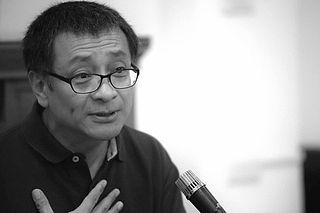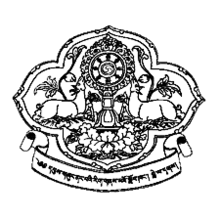
Ladakh is a region administered by India as a union territory, and constitutes a part of the larger Kashmir region, which has been the subject of dispute between India, Pakistan, and China since 1947. Ladakh is bordered by the Tibet Autonomous Region to the east, the Indian state of Himachal Pradesh to the south, both the Indian-administered union territory of Jammu and Kashmir and the Pakistan-administered Gilgit-Baltistan to the west, and the southwest corner of Xinjiang across the Karakoram Pass in the far north. It extends from the Siachen Glacier in the Karakoram range to the north to the main Great Himalayas to the south. The eastern end, consisting of the uninhabited Aksai Chin plains, is claimed by the Indian Government as part of Ladakh, and has been under Chinese control since 1962.

Leh is the joint capital and largest town of the union territory of Ladakh in India. Leh, located in the Leh district, was also the historical capital of the Kingdom of Ladakh, the seat of which was in the Leh Palace, the former residence of the royal family of Ladakh, built in the same style and about the same time as the Potala Palace in Tibet. Leh is at an altitude of 3,524 m (11,562 ft), and is connected via National Highway 1 to Srinagar in the southwest and to Manali in the south via the Leh-Manali Highway.

The Ladakhi language is a Tibetic language spoken in Ladakh, a region administered by India as a union territory. It is the predominant language in the Buddhist-dominated district of Leh. Though a member of the Tibetic family, Ladakhi is not mutually intelligible with Standard Tibetan.

The 7th Dzogchen Ponlop is an abbot of Dzogchen Monastery, founder and spiritual director of Nalandabodhi, founder of Nītārtha Institute for Higher Buddhist Studies, a leading Tibetan Buddhist scholar, and a meditation master. He is one of the highest tülkus in the Nyingma lineage and an accomplished Karma Kagyu lineage holder.
Traleg Kyabgon Rinpoche (1955–2012) was the ninth incarnation of the Traleg tulku line, a line of high lamas in the Kagyu lineage of Vajrayana. He was a pioneer in bringing Tibetan Buddhism to Australia.

Ladakh has a long history with evidence of human settlement from as back as 9000 b.c. It has been the cross road of high asia for thousands of years and has seen many cultures, empires and technologies taking birth in its neighbours. As a result of these developments Ladakh has imported many traditions and culture from its neighbours and combining them all gave rise to a unique tradition and culture of its own.

The Central Institute of Higher Tibetan Studies, formerly called Central University for Tibetan Studies (CUTS), is a Deemed University founded in Sarnath, Varanasi, India, in 1967, as an autonomous organisation under Union Ministry of Culture. The CIHTS was founded by Pt. Jawahar Lal Nehru in consultation with Tenzin Gyatso, the Dalai of Lama, with the aim of educating Tibetan youths in exile and Himalayan border students as well as with the aim of retranslating into Sanskrit and translating into Hindi and other modern Indian languages lost Indo-Buddhist Sanskrit texts that now exist only in Tibetan.
Khunu Lama Tenzin Gyaltsen, 1894–1977, known also as Negi Lama Tenzin Gyaltsen, Tenzin Gyaltsen, and various other names like Kunu Rinpoche, Kunu Lama and Negi Lama, was born in 1894 in the village of Sunam which lies in the forest-clad Kinnaur district of India in the western Himalayas. Khunu Rinpoche was neither a tulku nor a Buddhist monk but a layman who took the lay practitioner's vows.

Thikse Gompa or Thikse Monastery is a gompa affiliated with the Gelug sect of Tibetan Buddhism. It is located on top of a hill in Thiksey approximately 19 kilometres (12 mi) east of Leh in Ladakh, India. It is noted for its resemblance to the Potala Palace in Lhasa, Tibet, and is the largest gompa in central Ladakh, notably containing a separate set of buildings for female renunciates that has been the source of significant recent building and reorganisation.

Korzok, is a Tibetan Buddhist monastery belonging to the Drukpa Lineage. It is located in the Korzok village, on the northwestern bank of Tso Moriri (lake) in Leh District, Ladakh, India. The gompa (monastery), at 4,560 metres (14,960 ft), houses a Shakyamuni Buddha and other statues. It is home to about 70 monks.

Ngawang Lobzang Thupstan Chognor, commonly known as 19th Kushok Bakula Rinpoche was a Buddhist lama, who also served as India's ambassador to Mongolia. He is mainly known for his efforts in reviving Buddhism in Mongolia and Russia by linking them with the community of Tibetan exiles in India.

Lingshed Monastery or Lingshed Gompa is a Gelugpa Buddhist monastery in Ladakh, India. It is located near Lingshet village in the Leh district. It was founded in the 1440s by Changsems Sherabs Zangpo, disciple of Je Tsongkhapa, on a monastic site previously founded by the Translator Rinchen Zangpo. The monastery has belonged to the religious estate of Ngari Rinpoche since 1779. The Jangchub Tensung Dorje Center was founded in Lingshed by Kyabje Dagom Rinpoche in 1994.

Likir Monastery or Likir Gompa (Klud-kyil) is a Buddhist monastery in Ladakh, Northern India. It is located at 3700m elevation, approximately 52 kilometres (32 mi) in the west of Leh. It is picturesquely situated on a little hill in the valley, in Likir village near the Indus River about 9.5 kilometres (5.9 mi) north of the Srinigar to Leh highway. It belongs to the Gelugpa sect of Tibetan Buddhism and was established in 1065 by Lama Duwang Chosje, under the command of the fifth king of Ladakh, Lhachen Gyalpo (Lha-chen-rgyal-po).
There is a small Mongolian community in India, comprising mostly Buddhist monks and scholars as well as international students from Mongolia.

Tashi Rabgias was an eminent Indian scholar and historian who belonged to the Union Territory of Ladakh. He was a scholar of Mahayana and Vajrayana Buddhism. He commanded great expertise over the Bhoti language. He has many books to his credit. He has a collection of more than 200 folk songs for which he was awarded a Robe of Honour by the Art Culture and Language Department, Govt of Jammu and Kashmir.

Demchok , previously called New Demchok, and Parigas by the Chinese, is a village and military encampment in the Indian-administered Demchok sector that is disputed between India and China. It is administered as part of the Nyoma tehsil in the Leh district of Ladakh by India, and claimed by China as part of the Tibet Autonomous Region.
Ram Shankar Tripathi was an Indian scholar of Buddhism, editor and author of many texts focusing on Buddhist philosophy and Buddhist Tantra. Partly inspired by Jagannath Upadhyaya, Ram Shankar Tripathi had been instrumental in reviving the study of Buddhist texts among Sanskritists in India and abroad, having taught a vast number of scholars from different parts of the world, and through a long-lasting association with traditional Buddhist scholars, from Tibet, Burma and elsewhere. Much of the important editorial work from the CUTS in Sarnath was encouraged and supported by Ram Shankar Tripathi's guidance; several prominent Tibetan Lamas, as well as a good number of contemporary Buddhologists, had studied with him.

Choglamsar, also spelt Chuglamsar, is a census town in the Leh district of Ladakh, India. It is located on the bank of the Indus River.

The culture of Ladakh refers to the traditional customs, belief systems, political systems that are followed by Ladakhi people in India. The languages, religions, dance, music, architecture, food, and customs of the Ladakh region are similar to neighboring Tibet. Ladakhi is the traditional language of Ladakh. The popular dances in Ladakh include the khatok chenmo, cham, etc. People of Ladakh also celebrate several festivals throughout the year, some of the most famous ones being Hemis Tsechu and Losar.

Rizong Sras Rinpoche is an Indian cleric from Ladakh born in 1928 who was the 102nd Ganden Tripa - now known as Ganden TrisurRizong Rinpoche. Prior to becoming the Ganden Tripa, he was the Jangtse Chöje Rinpoche from Gyüme Tantric College.
















